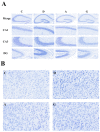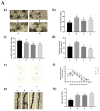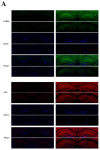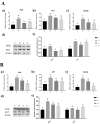Music with Different Tones Affects the Development of Brain Nerves in Mice in Early Life through BDNF and Its Downstream Pathways
- PMID: 37175826
- PMCID: PMC10179650
- DOI: 10.3390/ijms24098119
Music with Different Tones Affects the Development of Brain Nerves in Mice in Early Life through BDNF and Its Downstream Pathways
Abstract
As a means of environmental enrichment, music environment has positive and beneficial effects on biological neural development. Kunming white mice (61 days old) were randomly divided into the control group (group C), the group of D-tone (group D), the group of A-tone (group A) and the group of G-tone (group G). They were given different tonal music stimulation (group A) for 14 consecutive days (2 h/day) to study the effects of tonal music on the neural development of the hippocampus and prefrontal cortex of mice in early life and its molecular mechanisms. The results showed that the number of neurons in the hippocampus and prefrontal cortex of mice increased, with the cell morphology relatively intact. In addition, the number of dendritic spines and the number of dendritic spines per unit length were significantly higher than those in group C, and the expressions of synaptic plasticity proteins (SYP and PSD95) were also significantly elevated over those in group C. Compared with group C, the expression levels of BDNF, TRKB, CREB, PI3K, AKT, GS3Kβ, PLCγ1, PKC, DAG, ERK and MAPK genes and proteins in the hippocampus and prefrontal cortex of mice in the music groups were up-regulated, suggesting that different tones of music could regulate neural development through BDNF and its downstream pathways. The enrichment environment of D-tone music is the most suitable tone for promoting the development of brain nerves in early-life mice. Our study provides a basis for screening the optimal tone of neuroplasticity in early-life mice and for the treatment of neurobiology and neurodegenerative diseases.
Keywords: BDNF-downstream pathways; music; neurodevelopment; tone.
Conflict of interest statement
None of the authors have any financial or personal relationships that could inappropriately influence or bias the content of the paper.
Figures










References
MeSH terms
Substances
Supplementary concepts
LinkOut - more resources
Full Text Sources
Research Materials
Miscellaneous

